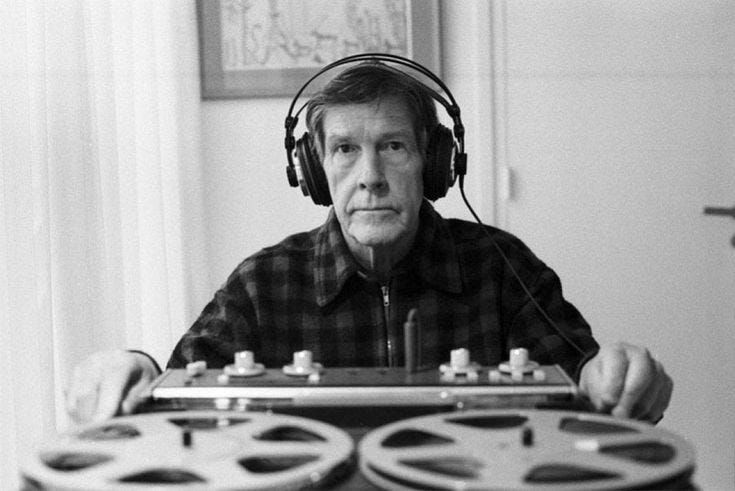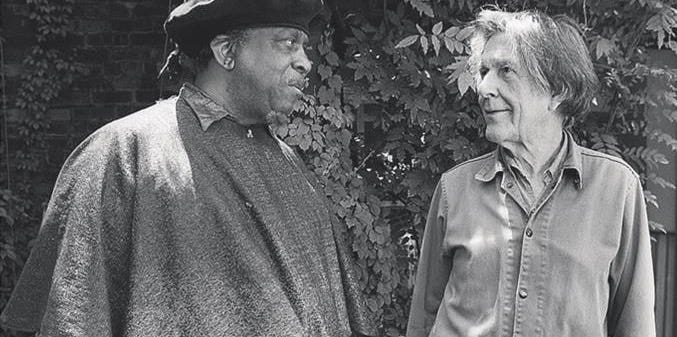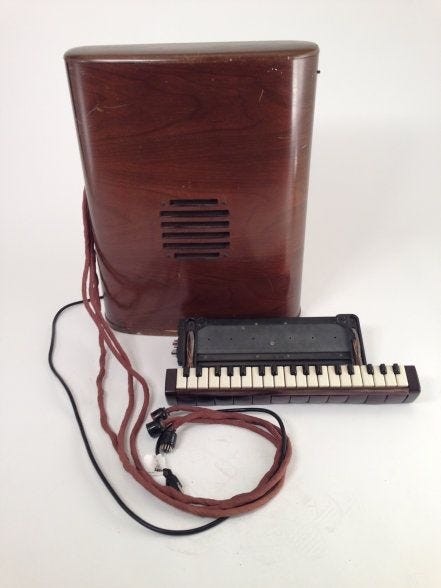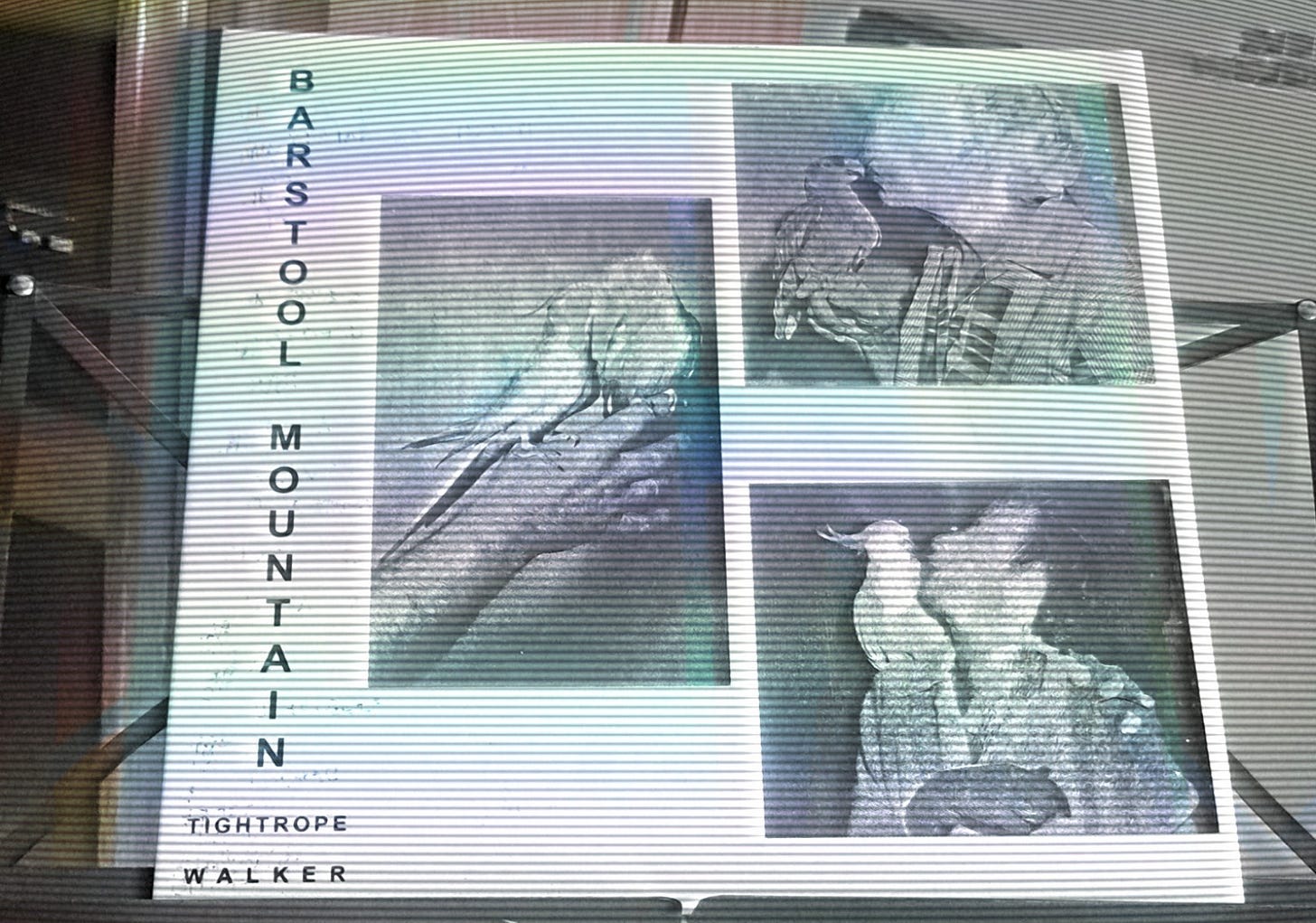What’s up guys,
Some of you might recall that when I returned from my brief hiatus a little over a year ago now, I stated that the reason I decided to return to blogging was because I had intended to write a series on the History and Development of Electronic music. Part 1 was the Luigi Russolo article on The Art of Noises and Part 2 was the Pierre Schaeffer article on Musique Concrete. So what happened to that series and why was there never a part 3?
Well, there are a few reasons that series got shelved for a bit. The first was the article on Elitism in Extreme Metal ended up being my most popular article to date, which caused me to go down a bit of a Metal rabbit hole and write a few more articles in the direction. Then I started uploading my own Mostro Space Jazz beats and I wanted to spend some time on Jazz, and try and cultivate a readership that might actually be interested in the kind of music I make. And then before you know it a year has passed and part 3 never got done. So today, I’m going to pick that series up again and finally do the third instalment. I always did intend to come back to it, but time flies. It is what it is. You should expect a fourth part eventually, but this series is most likely going to continue to be somewhat erratic. Truth is I enjoy writing these, but I also enjoy writing about other kinds of music, and I don’t have any allegiance to any specific scene or style. Eclecticism is what you should expect here.
I’m going to be looking at John Cage’s short essay The Future of Music: Credo, and in the second half I am going to review two noise records from Canadian Noise label, Absurd Exposition: Barstool Mountain - Tightrope Walker and Zenta Sustained - Serpent Track Patterns. So let’s get into it…
John Cage doesn’t need too much of an introduction. He’s one of the most well known and influential figures in 20th Century Avant-Garde music. His most famous work is 4’33, where the performer plays nothing and the “music” is the incidental sounds heard by the confused audience who expected to see a musical performance, y’know, with sound and stuff. Other things he is known for include the technique known as “prepared piano” where he would insert objects, such as screws, between the strings of the piano in order to alter the piano’s traditional sound. He was also fond of composing music by “chance,” informed by the I Ching. This wasn’t random or improvised music. He would develop complex systems to determine which notes he would play, and he would use different systems for different pieces he would create.
Watch the man at work here:
The dude had a lengthy and prolific career. He hung around with Dadaists and Surrealists, he appears in Maya Deren films, he was the first guy to compose with turntables, he did a lot of cool shit in his day, and covering it all here is really not the scope of this article. I’m mostly going to focus on an article he wrote in 1937 entitled The Future of Music: Credo in which he declares Noise to be the future of music.
“Whereas in the past, the point of disagreement has been between dissonance and consonance, it will be, in the immediate future, between noise and so called musical sounds.”
In the article he argues that “music” was a product of the 18th and 19th centuries, and proclaims that modern music would be more like an organization of sounds, and like Russolo and Schaeffer, he see’s musical and rhythmic possibilities in the everyday sounds of the modern urban environment. “We can compose and perform a quartet for explosive motor, wind, heartbeat and landslide.”
He criticizes the inventors of electronic instruments for clinging too much to the past and the familiar and felt they should boldly build new instruments unencumbered by the limitations of the past. He gives the examples of the Novachord and the Solovox.

He complains that even when something genuinely new comes along, like the Theremin, classically trained musicians will bend over backwards imposing a traditional sound onto it, rather than embracing the new sonic possibilities offered by this strange instrument.
It is not mere coincidence that Walter Carlos’ “Switched on Bach” is more widely listened to than the work of Morton Subotnick or Suzanne Ciani, whose works were actually innovative, challenging and new.
Cage anticipates the Bedroom Producer as the composer of the future:
“It is now possible for composers to make music directly, without the assistance of intermediary performers.”
He continues:
“The composer (organizer of sound) will be faced not only with the entire field of sound but also with the entire field of time. The “frame” or fraction of a second, following established film technique, will probably be the basic unit in measurement of time. No rhythm will be beyond the composer’s reach.”
In the past composers would have to reign in their more adventurous ideas due to the reality of having to find musicians who would actually be able to play this stuff. Not so with modern sequencers which literally serve the function of “organization of sound” that Cage speaks of. Now the only real limitations are on the composers own imagination. Anything is possible now.
He speaks on the music of the future being percussive music, incorporating any and all sounds from both within the musical realm and from outside of it. This reminds me of Aphex Twin, sampling things like a bouncing ball and using it as a percussive element in his song Bucephalus Bouncing Ball.
Benn Jordan covers how Aphex Twin put this track together in 1997 at 6:33. Worth watching.
So, much of what John Cage was predicting in 1937 has now come to pass and are established norms in the contemporary musical landscape. Music is now largely produced by solitary individuals organizing sounds on a DAW or a hardware Sequencer. Both musical and non-musical sounds are incorporated regularly and you can hear noise elements in most forms of popular music. You can hear Distortion and/or Fuzz employed in popular rock guitar tones, electronic blip bloops as percussive elements in EDM and Pop Music, non-musical sounds incorporated as rhythmic elements in hip-hop beats. Noise was for all intents and purposes the main great innovation of 20th century music, influenced by rapid industrial advances and technological innovation and a fresh new perspective on the world we inhabit and the sounds that we hear in it. The music of today would be incomprehensible to people in the 17th Century, and that is as it should be.
I wanted to cover this short essay by Cage on the blog, because I have criticized the Avant-Garde in the past for generating a lot of interesting idea’s but not really knowing how to apply them in a way that would actually make for good music to listen to. Like often times the theory guiding the work is more stimulating and interesting than the work itself. And I believe this is because so many of the figures involved are not really musicians. Russolo, for example was initially a painter. He saw musical possibilities in modern noise but his interest was more aesthetic than musical. Pierre Schaeffer was more of an academic/Musicologist than a musician. Cage differs from these two figures as his background is actually musical, studying under Henry Cowell and Arnold Schoenberg though he reaches similar conclusions.
But where do we go from here? If Noise was the great innovation of the 20th century, what will define the music of the 21st? Timbaland recently pissed everyone off by declaring AI technology as the future of music, and claiming it has “more soul” than modern musicians, after signing AI artist Tata. Is Timbaland a visionary ahead of his time as John Cage was? A troll baiting the internet music community? An uninspired has been who isn’t even trying anymore? I’ll let you decide, though public consensus seems to be leaning toward the latter.
While I agree that AI is indeed transforming the musical landscape in similar ways that technological advances in musical instrumentation and reproduction in the 20th century influenced the music produced. The main flaw of AI is that it literally cannot be innovative or do anything new. The old tech of the 21st century literally opened up new worlds of creative possibilities, but I’m not really seeing that with AI. Humans still can be creative, but they’ve largely forgotten how. I guess I’ll leave where we go from here as an open ended question as I don’t necessarily have a definitive answer. I will say it will probably involve creative usage of new technologies, but I don’t envision a future where people are genuinely stoked about the latest AI prompted work by Timbaland or anybody else. The only people I’m seeing who actually like AI are tech bros and music industry types who don’t want to have to pay artists. Musicians and music lovers appear to universally hate this stuff. I think what people are thirsty for is authenticity and something fresh, new and exciting. What that will look like remains to be seen, but I for one see AI as a barrier to be overcome, not a tool that is going to help us produce new sounds. It’s tech that was developed for content based streaming app’s like Spotify, not as a creative tool for artists in my opinion. It can be useful in certain ways, as a research tool for example, I think it’s much more efficient than Google, so I don’t see the tech going away anytime soon. As a creative assistance tool it can only serve as a crutch for the lazy, unskilled and uninspired, and I don’t think it will ever churn out anything of true substance.
Alright, onto record reviews.
Barstool Mountain - Tightrope Walker
Alright, so these reviews are going to be kind of brief, mainly just because I find it somewhat difficult to write about Noise, as it doesn’t really have any of the characteristics of normal music that you can riff off of. I also don’t really know much about the artist responsible for this. From what I’ve been able to gather Barstool Mountain is a project of Mattias Gustafsson from Mjölby, Sweden, who also records Noise as Altar of Flies and sometimes just as Mattias Gustafsson. According to Gustafsson in this interview:
“Barstool Mountain is the more primitive, spontaneous, raw and back to the basics side of me, I think. Altar Of Flies and under my own name are sometimes very different but it also sometimes floats together. Every track and composition, I think, has a meaning in the big puzzle called life.”
“primitive, spontaneous and raw” are definitely accurate descriptors for what you’ll find here. And yeah, from what I’ve heard of his other work, it is somewhat more subdued. Not to say more accessible, just a little less off the hinges. We have what sounds like contact mic/sheet metal noise, no input mixer noise, lots of feedback, occasionally what sounds like distorted vocal samples. Apparently he’s fond of working with tape, so there’s probably some looping going on. There really isn’t any attempt to reconcile Noise with “real” music here, this is raw and this is harsh. And yeah, this is spontaneous, it sounds very improvised and unplanned. Very cool.
My version did not come with this bonus tape, but I thought I’d share it here since none of the album proper is on YouTube.
Zenta Sustained - Serpent Track Patterns
This one is a collaboration between Ryan Bloomer, the owner of Trauma Tone Recordings and alumni of several Toronto based Hardcore and Noise projects such as The Endless Blockade, Ride at Dawn and Piss Horn, and Sam McKinley from Vancouver, most known for his project, The Rita. The Rita are widely regarded as the key originator of the style of Harsh Noise known as Harsh Noise Wall. What this entails is layered noises, coalescing into a massive wall of harsh, static unchanging noise, and that is what you will get with this release; two sides of static unchanging noise.
I’m not sure this release is really all that Harsh though. To my ears it sounds more scratchy, clicky, and like a sort of dull hum. I wouldn’t use adjectives like “ear splitting” or “abrasive” to describe this particular release. It’s actually fairly subdued, and for me at least oddly calming. Like I put it on when I’m reading or I want something that won’t be distracting, so it ends up being almost Ambient to me, albeit not the spacey, dreamy, ethereal kind at all.
As you can see from the cover photo, we’ve got a Harley Davidson and a womans leg’s in tights. Machinery and stocking fetishism. What the hell’s not to like! Visuals and aesthetics are actually very important to McKinlay’s work and there are certain recurring theme’s that kind of pop up again and again throughout his catalog, stockings being one of the main ones. And reviewing this release offers me the opportunity to share this really cool documentary about McKinlay that gives a lot of insight into his creative process, his aesthetic obsessions and Ballet! Even if 30 minutes of static unchanging noise doesn’t sound like your idea of a good time, this doc is still worth watching, as McKinaly is just an interesting guy, check it out.
That about covers it for this month. In two weeks I’ll be back Mostro Mix #7. Till then, salut.










Regarding the composer, I wonder how far the break can go. I tend to see more power in work that has some structure, as in The Bastard Noise's "Rogue Astronaut". Pure noise or harsh noise is more destructive but less powerful. Although that may be a prejudice and perhaps Cage means something else.